Cloches Can Protect Plants And Reduce Losses – Here’s When And How To Use Them


Elizabeth is a Permaculture Garden Designer, Sustainability Consultant and Professional Writer, working as an advocate for positive change. She graduated from the University of St. Andrews with an MA in English and Philosophy and obtained a Diploma in Applied Permaculture Design from the Permaculture Association.
Reviewed By ROY NICOL

Roy is a Professional Gardener and Horticultural Consultant, specialising in large garden year-round maintenance and garden development. He is an RHS Master of Horticulture and uses his research in the application of no-dig methods in ornamental garden settings. Roy has been a Professional Gardener for more than six years and is a member of the Chartered Institute of Horticulture, Professional Gardener's Guild and Association of Professional Landscapers (Professional Gardener).
Using cloches in the garden can be a good way to protect plants and reduce losses.
It can help you extend your growing season and make more of your space.
If you are new to gardening, you may be wondering what a cloche actually is and how you might use one.
In this article, we’ll introduce you to this concept, tell you why they are used, and help you understand how and when to use them in your own garden.
What Is A Cloche?

The term cloche comes from the French word for bell.1Definition of cloche. (2023). In Merriam-Webster Dictionary. Retrieved March 20, 2023, from https://www.merriam-webster.com/dictionary/cloche
It was originally used to describe glass domes, or bell-shaped covers which were placed over individual plants, or small numbers of plants, in gardens and on farms.
Cloches of this type were used in the potager, market gardens and farms in France during the 19th Century – sometimes over all the plants in a field.2Crown & Colony Antiques. (2017, August 27). French Cloche. Crown and Colony Antiques. Retrieved March 20, 2023, from https://crownandcolony.com/blog/french-cloche/
It must have been rather remarkable to see these bell-shaped glass domes covering acres of fields outside Paris, when they were used to supply the households and restaurants in the city with produce outside of the usual season.

Across Europe, other forms of cloche began to be used over time.
Popular cloches also included ones shaped like little barns, or mini-greenhouses – like those developed by Chase in the 1930s.
These are barn-shaped cloches held together in rows by a clever wire framework.
You may still see these in traditional walled kitchen gardens.

Over time, the word cloche came to refer not only to the original bell-shaped covers, but also to other covers.
Of course, the advent of plastics meant that plastic cloches are now a more common option.
These come in a range of shapes and sizes, and you can even make your own using items that might otherwise have been thrown away.
Today, the term is used to refer to any small glass or plastic-covered frame cover used to protect plants.
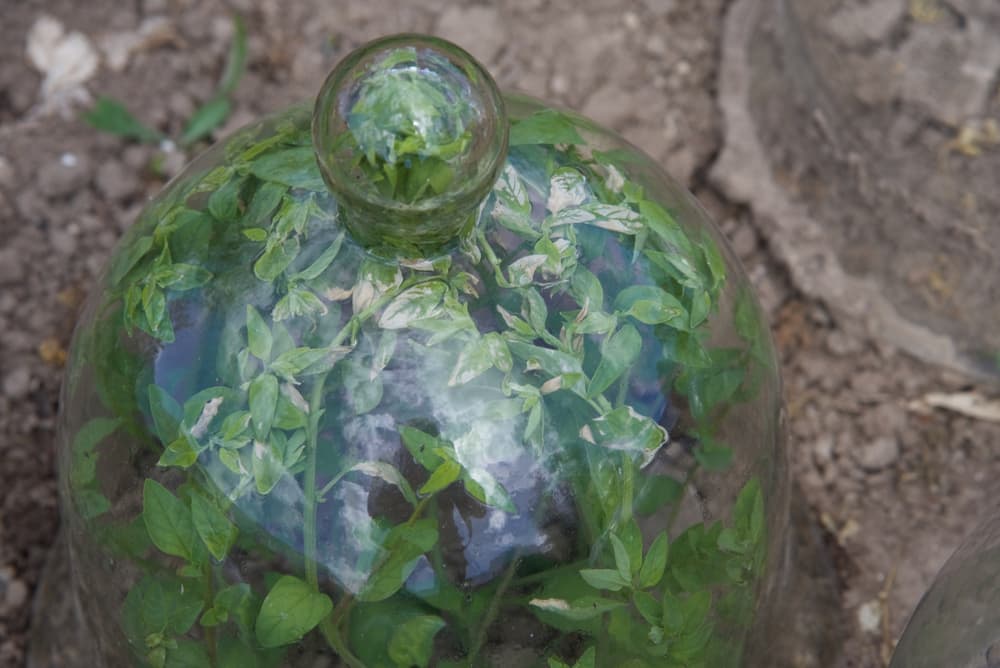
Why Use Them?
Cloches can be used to extend the length of your growing season and make more of your space because they create a small microclimate around the plant or plants which are covered.
The covered area affords the plant or plants some level of protection, either from the cold, or from certain pests.
Winter Protection
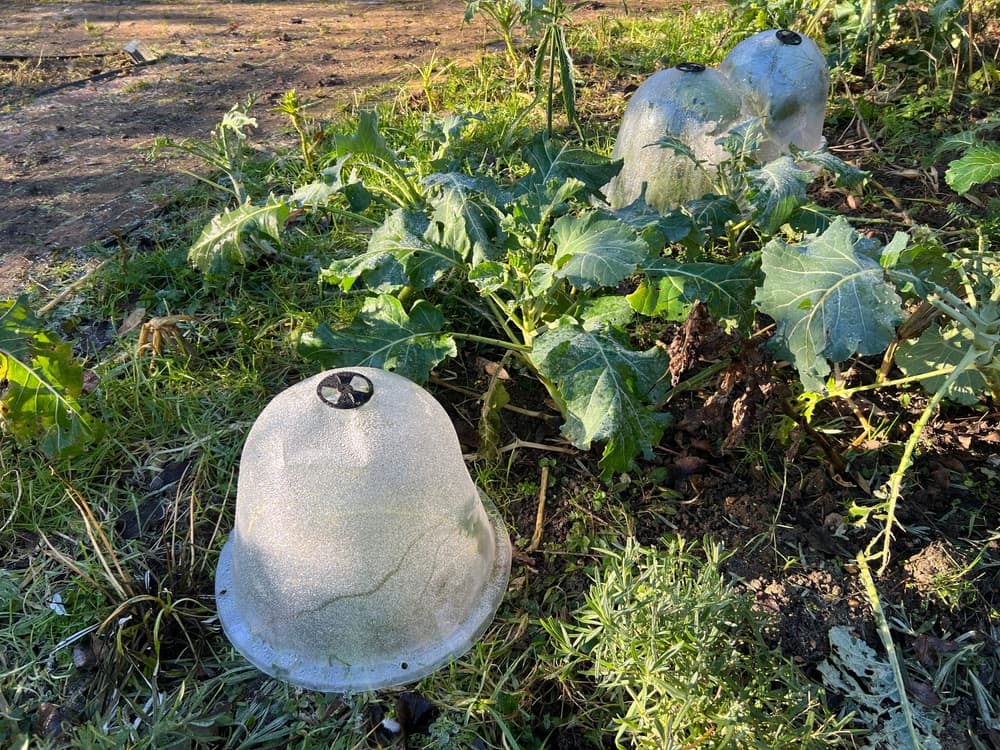
The main reason why cloches can be so extremely useful is that when they are used to cover plants, they can alter to temperature below them.
Depending on the materials used and the exact design of the cloche in question, they can create a microclimate a couple of degrees, or even more degrees warmer than the surroundings.
Cloches are commonly used to allow growers to sow and plant earlier in the spring, to keep plants going longer into the autumn months, to ripen crops such as aubergines and peppers, to grow cut flowers and to strike cuttings in the protected environment.
Cloches can be placed to warm the soil prior to spring sowing or planting and can give a few extra weeks for summer crops to ripen as the first frosts approach.
They can also be used to provide some protection for more tender plants over the winter months – including ones which you would not usually be able to overwinter successfully where you live.
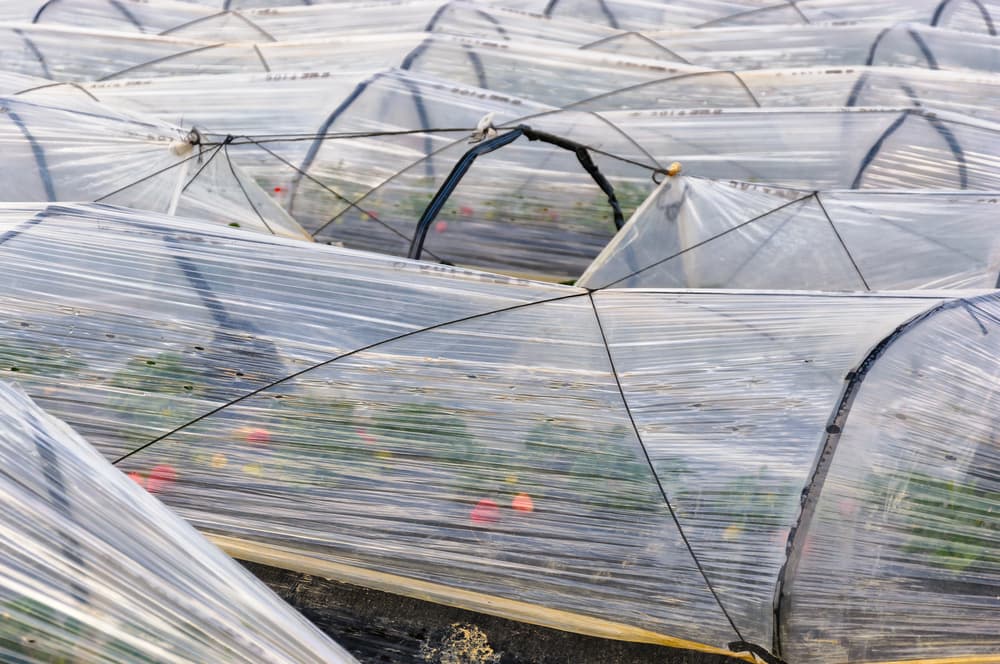
They work in exactly the same way in this regard as any other covered growing area, be it a row cover, cold frame, polytunnel or greenhouse structure.
Though cloches are smaller, more portable, more useful for smaller spaces – and can offer more flexibility for gardeners.
Protecting From Pests
Cloches also provide plants with some level of protection from certain pests.
However, the exact design of a cloche will determine how effectively they can serve as a physical barrier to prevent pests from reaching your plants.
Of course, cloches can be an effective barrier when pests come from above or from larger pests on the ground, such as pigeons, or other birds, and rabbits, for example.
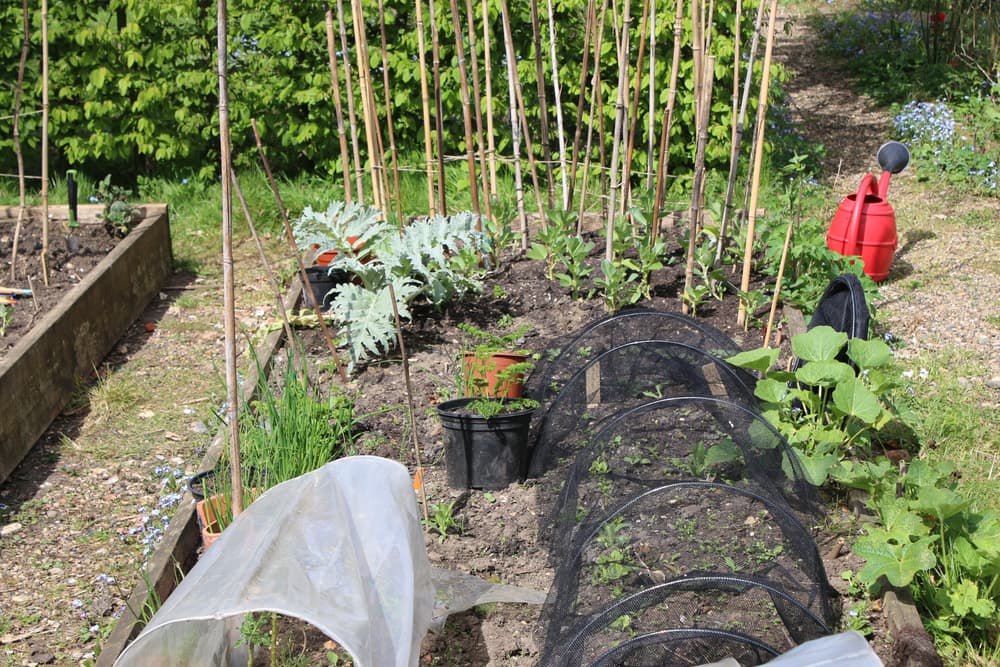
It should be noted that cloches must usually be ventilated in order to gain effective airflow.
This means that there may be gaps allowing pests to get through.
Since cloches are open at the base, they also will not protect from pests within the soil such as slugs and vine weevil larvae.
“Cloches can also help prevent infection from air-borne diseases, such as late blight which affects tomato and potato crops,” shares Master Horticulturist Roy Nicol.
How To Use Cloches
- Place cloches in the garden in early spring to warm the soil before sowing or planting out indoors grown plants.
- Keep cloches over early planted crops to protect them from late frosts and cold snaps.
- Place cloches over plants like strawberries for example to force an earlier harvest.
- Put cloches over small seedlings or particularly prized plants throughout the summer to create a physical barrier against certain pests.
- Protect plants usually too tender for your summer climate with cloches to grow them outdoors where you live.
- Place cloches over tender plants when an early frost threatens.
- Use cloches to cover tomato plants or other summer crops to encourage fruits to ripen before the end of the growing season and prolong the period of harvest.
- Overwinter crops that cannot quite cope with winter conditions where you live under cloches, so you can sow, grow and harvest year-round.
Common Disadvantages
Though cloches can be very useful in a smaller space to protect plants over winter and to prolong the growing season and in pest control – there can be certain challenges which come along with their use.
It is therefore important to choose a cloche wisely, and to use it correctly, in order to make sure that the disadvantages do not outweigh the benefits.
Watering & Humidity

Of course, when you cover your plants, this means that natural rainfall will be excluded, so you will have to work a little harder to ensure that water needs are met.
Cloches will tend to raise humidity levels below them and in certain circumstances, this can be beneficial.
However, when ventilation is inadequate, and airflow is lacking, certain diseases such as fungal issues may be more likely to take hold.
This is something that you will have to bear in mind when deciding how, where and when to use them.
Encouraging Weeds
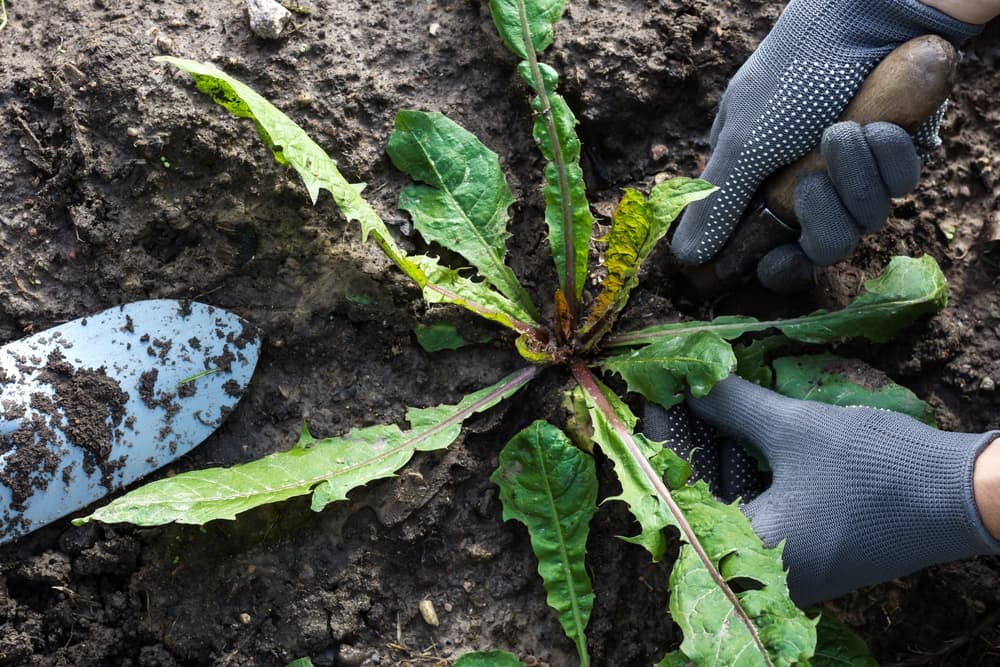
Rainfall flowing down the sides of cloches can create a moist environment around the edges of the cloche where weeds can thrive.
Another thing to note is that the warmer environment below a cloche will not only foster good growth of the plants you are protecting, but also of any weeds that germinate.
Checking regularly and keeping on top of weeding can therefore be especially important.
Pollination Issues
Another important thing to remember when plants are grown under any sort of cover is that it may restrict or eliminate pollinator access to the plants.
If insect-pollinated crops or wind-pollinated crops are grown under cloches, these should usually be removed during the time when flowers are in bloom, or pollination and fruit set may not occur.
How To Make A DIY Cloche
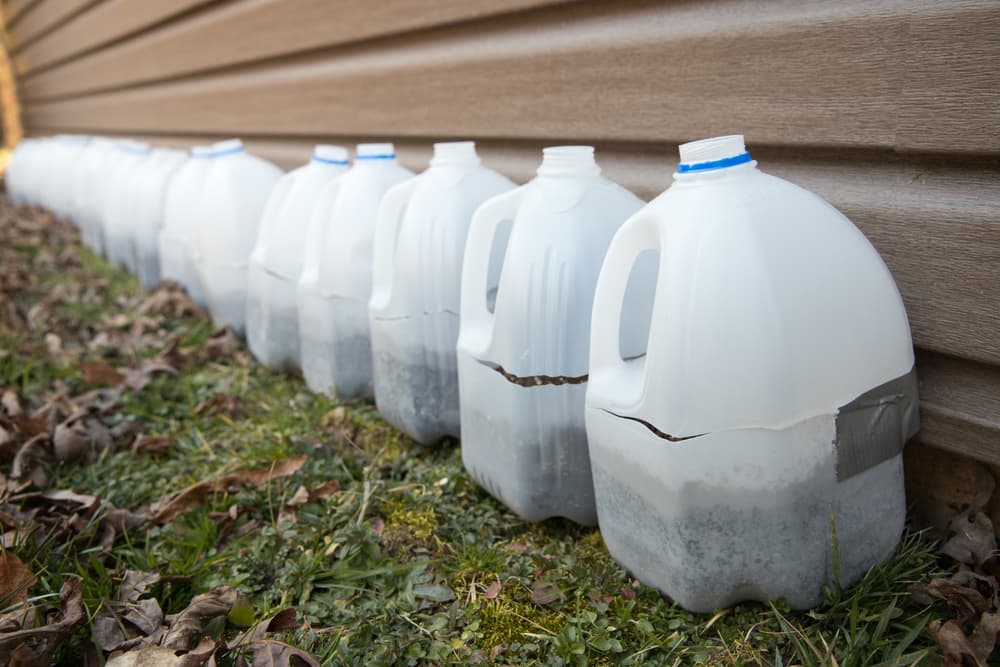
Cloches can be purchased, but it is also an excellent idea to consider making your own using reclaimed materials.
This is a cost-effective and eco-friendly way to protect the plants in your garden.
Small mini-greenhouse type cloches can be made from small reclaimed window sections, or even old CD cases.
Plastic boxes and clear plastic tubs can also be used.

One of the easiest DIY cloche ideas involves the use of plastic drinks bottles or milk containers cut off at the base.
Plastic cloches will not warm the environment as much as a glass cover, but they can offer enough protection for many purposes.
One benefit of making cloches from plastic milk containers is that the handle can be cut off, and a cane or small branch inserted through it so that the cloches will not blow away.
The lid can be removed to allow airflow during the day and then placed back on for extra heat retention at night.

Of course, these cloches can only be used for very small seedlings and plants, but they can be very useful for protecting plants sown early in the spring.
They can also be used as extra pest protection for plants overwintering outdoors, or in a polytunnel.
“Another effective way to make a tunnel cloche is to either purchase wire hoops or make them from pieces of bendable wire or plastic pipe and then drape them with horticultural fleece, mesh or polythene, pegging the material down at the sides to allow ventilation at either end,” shares Roy.
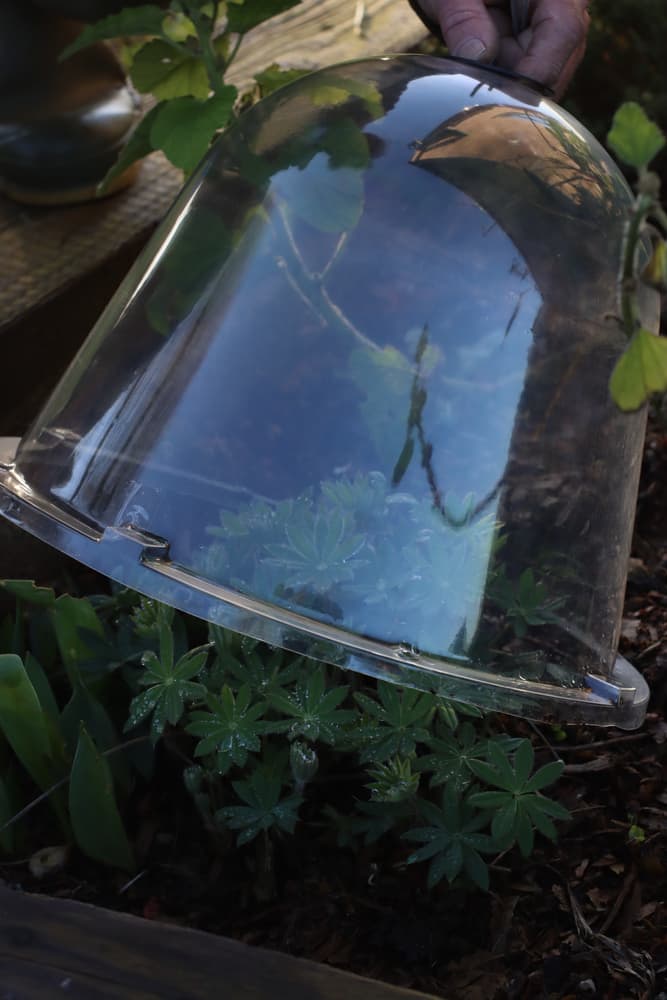
“This suits crops or other plants grown in drills, with the material used varied according to the protection required, whether for warmth or against insects.”
References
- 1Definition of cloche. (2023). In Merriam-Webster Dictionary. Retrieved March 20, 2023, from https://www.merriam-webster.com/dictionary/cloche
- 2Crown & Colony Antiques. (2017, August 27). French Cloche. Crown and Colony Antiques. Retrieved March 20, 2023, from https://crownandcolony.com/blog/french-cloche/
